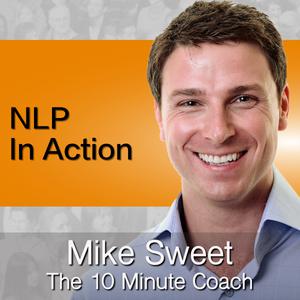
NLP In Action - Mike Sweet - 10 Minute Coach - Rapid Practical NLP
Mike Sweet - The 10 Minute Coach
- 11 minutes 10 seconds023 - Reframing in NLP
Reframing is a core element of NLP. It's a simple yet powerful process that can mean the difference between you have a stressed and uptight life or one much more enjoyable one. Seriously, it really is that good. And the great news is, you'll already do this in some shape or form.
18 March 2018, 4:00 pm - 15 minutes 45 seconds022 - Deletions in NLP
There are 3 areas that I'll separate out for Deletions. These are Nominalisations, Unspecified verbs and Simple deletions.
For clarity, the purpose of understanding deletions is to get to the heart of another person map. We are deletions machines, it allows us to simplify and fast track through life, but this means we miss so much of what actually is going on for a person.
The first sections we can take a deep dive into is Nominalisations, I have written a post, podcast and video on this, but in the interest of keeping it all together, here's another summary.
17 March 2018, 4:00 pm - 11 minutes 47 seconds021 - Generalisations in NLP
Generally speaking, generalisations are everywhere. Learn this and begin to spot generalisations in NLP.
Generalisations are one of the fundamental pieces of the Meta-model. With already took a deep dive into distortions which you can find here and also the question, what is the Meta-model and you can find that here too.
Generalisations generally occur whenever a person generalises specific information. So much of the Meta-model helps us navigate what we do daily. The Metamodel and the three fundamental pieces are a way for us to get to the heart of the real issue or understand what is the person is aiming to communicate.
16 March 2018, 8:50 am - 15 minutes 46 seconds020 - Distortions in NLP
There are five main distortions in NLP seen in the Meta model.
They are:
- Mind reading
- Cause-and-effect
- Lost performative
- Complex equivalence
- Presuppositions
We are all guilty of mind reading I know you are! A mind read is categorised by knowing what someone else is thinking or feeling but without any information to support that thought. Mind reading can come in lots of different forms. One of them which is very common is knowing what a person is thinking or feeling. Another is how others should know how we think and feel. And lastly predicting the future or proper sizing what is going to happen.
Whenever you hear mind reading type statements you can begin to ask questions using 'how' and 'what.'
Examples:
- "He wants to ask me out"
- "You don't give me what I want"
- "I just know Christmas will be a disaster"
- "I know that you will want to live in the Cotswolds when you see my house"
- "You have no idea what is going to happen"
Meta model challenges to those statements
- "How do you know he wants to ask you out?"
- "What do you want specifically?"
- "Really? How specifically do you know that?"
- "How do you know that when I see your house in the Cotswolds I want to live there?"
- "How do you know that I have no idea what is going to happen?"
Possible Reply
- "Well, he's always nervous when he's around me"
- "I want to feel like wearing this together"
- "It's just that December has been a nightmare so far so it will probably continue"
- "Because I did when I visited a friend here"
- "Because I think it's going to be worse than you given credit for"
Recognising a cause-and-effect Meta model violation is when you spot and X causes why configurations in the language. so much of our life is in a cause-and-effect format that has a tendency to make connections where there is none. "If you do your homework, then you can stay up late on Friday." "If you pass all of your grades at school, you will get a good job."
So in the Meta model for cause and effect, we are looking for violations where someone associates X causes Y.
Whenever you spot this cause-and-effect violation it's time to begin asking more questions to find out how specifically do they know that X causes Y?
Examples:
- "My boss makes me angry when he doesn't come in early on Monday"
- "If my daughter fails her dance exam I will be disappointed"
- "Going to the gym will wear a body out"
- "If you drink alcohol you will get dementia"
- "Getting married made my brother the depressive he is today"
Meta Model Challenges
- "How specifically that his lateness make you angry? What about if he's late on Tuesday?"
- "How will you disappoint yourself?"
- "How do you know that to be true? do you know of any gym goers who haven't worn at their body? Just how much Gym does it take to wear out your body?"
- "How much alcohol specifically? Do you know of anyone who does drink alcohol who hasn't got dementia? I drink some alcohol are you sure I will get dementia?"
- "What was it about marrying that made your brother begin to depress himself?"
Recognising a lost performative is when you hear a person say something like, "We will end up living on Mars by 2050" or "Only weak people stay in relationships."
The structure of a lost performative is an opinion stated as a fact and a value judgement that does not say who had that value.
You can begin to challenge lost performative type statements by asking "who says, according to whom and how do you know that?" type of questions.
Examples:
- "It's good to go to the Gym three times per week"
- "You need to go on as many training courses as you can"
- "Reading is relaxing"
Meta model Challenges to those statements
- "Who says it's good to go to the gym three times a week?"
- "Who says you need to go in as many training courses you can, and how do you know that to be true?"
- "According to whom?"
Possible replies to the challenges
- "I heard it on a podcast about health"
- "The person who was teaching me NLP!"
- "Well, I find reading relaxing!"
A complex equivalence is very similar to cause-and-effect. Just as we, cause-and-effect is when X causes Y. And complex equivalence can be recognised by hearing a statement that says X means Y.
"The fact that you're reading watching or listening to this means that you'll find something new!"
it's amazing how often you will hear people attach meaning to something very different.
"The fact that you're changing your job means that you are outgrowing your family"
Whenever you hear convex equivalent type statements you can challenge them by asking. "So does X have to always equal Y? Could it mean anything else? Does it always have to mean that?"
Examples:
- "You're not coming to bed the same time as me, you don't love me as much anymore"
- "Bitcoin value is rising our government isn't going to last"
- "Samsung are late releasing the new phone, so there's tension growing between North and South Korea."
Meta model challenges
- "How does me staying up to finish watching this documentary mean I don't love you as much?"
- "How does Bitcoin rising mean our government isn't going to last?"
- "How does Samsung being late to release their new phone mean there's growing tension between North and South Korea?"
Possible replies
- "I think married couples should always go to bed together to show there is a bond."
- "Well, Bitcoin is anti-establishment so I think a rise in its value means a fall in the governments holds."
- "They've never been late to release a new phone so It's obviously a big political reason."
If you've been looking into NLP you have heard the word presupposition quite frequently. A presupposition is simply a part of the statement has to be presupposed to be true in order for that sentence to make sense.
We challenge presuppositions to allow us to gain more specific detail and get closer to the truth. Let's look at some working examples of presuppositions in NLP.
Examples
- In court, a judge might say "have you stopped beating your wife?" This statement presupposes that the husband was, in fact, beating his wife.
- "What's your problem?" This presupposes that a person does have a problem.
- "Are you not intelligent enough to work this out?" This statement presupposes that there is something to work out, intelligence is required to work it out.
- "Enjoy your next burger even more" Presupposes that someone has had a burger and they will have another at some point.
Meta model challenges
You can use any suitable meta model question to dive more deeply into the intention behind any presupposition.
- "Your honour, are you suggesting I did want to beat my wife? could there be any other explanation to her bruised arm?"
- You could answer this provocatively. "Well, what's my problem? Depends on how long you've got!"
- "My next burger? how do you know of had one in the first place?"
with everything, practice makes permanent. To save this and come back to this article many times and really begin to notice these distortions in NLP in other people's language and even yours.
Have a play around with some of the Meta model challenges and begin to notice how you're able to really open up a person's map to allow you to understand more richly and more deeply.
13 January 2018, 5:00 pm - 9 minutes 34 seconds019 - What Is the NLP Meta Model
The NLP Meta model is a linguistic process that was developed back in the 70s by Richard Bandler and John Grinder. The Meta model gives you a set of questions that allow you to gain some high-quality information. By now, you probably understand that each of us represents the world very differently. We have our own map. The Meta model allows you to question a person's map to discover more detail and more of what is real.
Starting from the fact that we all experience life differently through our senses. And each of us distorts, generalise and delete lots of information at any given time. Each of our maps is completely different because of our internal representations are different. The Meta model allows us to explore a person's map in more detail.
The NLP Meta model has three distinct categories- Distortions
- Generalisations
- Deletions
Distortion is the process that allows you to take an experience and change it. Whenever we bring in information through our senses, we hold that in our memory in a way that is right for us at that time. If we don't talk about that event, we generally blur the lines between fact and fiction and we use our own language to describe what happened.
We often use distortions when we recall conversations, explain what happened and describe what and why we want something for example.
GeneralisationsGeneralisations are essential in our life. We use generalisations to garner information from one area to allow us to learn or understand another area. for example, if I was to show you a stool that you'd never seen before, you would know that that was a stool. It has three legs and a top, therefore, it must be a stool.
Generalisations can also work against you. Just because your last two bosses were horrible to you, doesn't necessarily mean all bosses are horrible. Our ability to generalise helps us massively. also, our ability to generalise can also lead us to make unhelpful connections generally.
DeletionsWe are deletion machines. It is said that there are over 2 billion pieces of information bombarding our senses at any one time. yet, we are only able to process between five and nine pieces of information at any one time.
it's simply not possible to pay attention to all of the information around us at any one time. Whatever you choose to be aware of will normally be picked up by your attention. You can select what it is you want to focus on and your senses will begin to notice those things. But think of how many processes are happening outside of your conscious awareness. That time a wasp was chasing you around the garden, did you notice how nice the flower smelt?
What we notice and what we focus on generally become real for us. This is why it's important to understand our usual structure of how we delete things. Imagine having a mindset where you consciously look for things to be appreciative for and things that go right. They are the things that you will notice and that will become real to you.
Big corporations often focus on areas that can be improved. this is fine from a constructive point of view in most cases, however, the people involved will find it difficult to see the successes and the enjoyment of the work that they are doing.
Check out the Reticular activating system and what you focus on increases for more on how our own radar works.
12 January 2018, 5:00 pm - 10 minutes 45 seconds018 - NLP Beliefs of Excellence - Part 2
This is part 2 of the NLP beliefs of excellence. Here is Part 1
You Cannot Not CommunicateWe understand communication is something that we usually do verbally. However, any thoughts or feelings that are happening internally, will begin to affect us physiologically on the outside and therefore will be communicating with others how and where we are at that time. whether verbally or nonverbally we cannot not communicate, and others around us are always communicating.
The Meaning Of The Communication Is The Response You GetI'm sure you can think of many times when you were talking with a person only to have them reject what you were saying and then you follow up with "that wasn't what I meant."
When you understand that we are all different and that there is no failure only feedback. You can begin to hold on to the belief that the meaning of the communication is the response that you get and therefore begin to take full ownership of your language and communication to ensure you get your message across in the way that you desire whilst paying particular attention to another person's map.
There Is A Positive Intention Behind Every BehaviourThis is sometimes difficult belief to swallow. However, if you do accept that there is a positive intention behind every behaviour. Then you can begin to question and wonder how another person may have constructed that within their map of the world.
If you see someone demonstrate behaviour that you don't like. What must be the positive intention for them at that time given the resources available to them?
Adopting this belief requires you to be curious and less judgemental.
People Are Always Making The Best Choices Available To ThemEach of us has our own unique personal history. this personal history defines and shapes our future choices and decisions. The combination of past events and history and current states emotions and knowledge allow people to make the best choices available to them at that time.
Ever heard the saying "with hindsight I'd......?"
This demonstrates that people are also able to review a situation or choice that they had made with hindsight and realise that they may have chosen something different had that information is available to them at that time.
There Is No Failure Only FeedbackThis belief of excellence has become more and more common. However, break it down into its simplest form and it's baffling it's even a thing. Nearly everything that we learn to do in life comes from repetition, change in strategy or direction and multiple attempts until we improve or get it right.
If as a child, we didn't have this embedded within us. Would all be crawling as adults is after failing, falling down repeatedly. We would see as a failure rather than feedback and be done with our lot crawling on all hands and knees for the rest of our lives.
As adults though, most of us shy away from the potential of failure. this is just a gentle reminder to say that every time you fail, you'll receive feedback and you'll be better able to make a more educated move the next time.
We Have All Of The Resources That We NeedThis can be a very empowering belief. I remember saying to my first NLP Trainer "but we don't, that's why we need to learn new things. We don't have the resources but with learning, we can have."
To which he responded, "and you do have the resources you need to know that you need to learn more which is why you're on this course."
Whenever I think of this belief of excellence now, I always think of the film my left foot
Sometimes the resources that we need are available to us they just require a little bit more effort.
Try some of these beliefs of excellence on size and noticed the impact that they have.
11 January 2018, 5:00 pm - 8 minutes 31 seconds017 - NLP Beliefs of Excellence - Part 1
What and how we believe can dramatically change the way we live our lives. And the great thing about beliefs is we can change them at any time that we choose.
NLP, which is the study of excellence which to put even more simply. The study of what works. And from studying what works comes these beliefs of excellence. Have a read through these beliefs of excellence and try them on the size. If you absorb and live by these beliefs, imagine how differently you would see situations.
Each person is unique - The Map Is Not The TerritoryThis is perhaps the most common for all of NLP. When you understand each person is individual, then, we are all different. Each of us has our mental maps that we interpret the world to arrive our very own conclusion. These, differ from person to person. each new experience and interpretation of the experience is usually shaded in some way by our experience. This is partially what gives us our uniqueness.
Each Experience Has A StructureThis can be viewed as all knowledge, memories, thoughts and imaginations are merely a result of the way we have filters installed all previous information. All of our thoughts and our memories have a pattern structure to them. And these are what allow us to anchor our emotional states and feelings to past experiences. The structure that is created within each experience allows us to fast-track back to an initial thought feeling or emotion at a specific time. If an unhelpful experience has a structure, they were able to change the structure which would change the output of that experience. This is one of the ways that change can occur using NLP techniques.
If Someone Can Do It - Anyone Can Do ItThis belief of excellence has been in place in NLP since the mid-70s. Only recently, Carol Dweck has added some sound science to this belief in her study of fixed versus growth mindsets.
What a great belief to hold. Also, if every experience has a structure, then everything that anyone does with excellence will also have a structure. Modelling, which is the cornerstone of NLP can allow a person to uncover another's excellence and try that on for size.
There Is A Solution To Every ProblemI believe that this belief is becoming more and more common. We live in a world now where we can access so much information, which solutions can become easier to find. If you do what you've always done then you'll get you always got. So when you believe that there is a solution to every problem, then you can look at the issue as temporary and use the tote model to begin to seek the solution intelligently.
The Mind And Body Are Parts of The Same SystemWhatever and however we think directly affects our physiology. But also, our physiology directly affects our psychology. This completely two-way street. You've heard the saying " fake it until you make it," which is now probably overused. However, there is a lot of sense in this because whenever a person acts confident and relaxed about the situation, then they will get able to feel that.
The converse is true also. When you act and feel depressed, then you're more likely to feel depressive feelings. The mind controls the body, and the body controls the mind they are parts of the same system
10 January 2018, 5:00 pm - 7 minutes 5 seconds016 - NLP Nominalisations
Nominalisations happen whenever a person describes a process (Verb) as a thing (Noun). Usually, a thing that cannot be picked up. You will hear NLP'ers talk about nominalisations is nouns that you can't put in a wheelbarrow.
You will begin to come to new understandings of this as you learn more about NLP.
The word understandings here is a 'thing' you will have. So, therefore, an item which is not tangible. 'Understandings' is a nominalisation. A summary of an action, into an item.
Nominalisations are stuck in time. Much of NLP is about uncovering and discovering the real meaning or intention behind the communication. Whenever a person describes something using a nominalisation, it seems very factual and stable. As a person working with an individual who is using nominalisations and feels trapped. You can begin to help them realise that the nominalisation is apparent and could become a process which is a verb.
I can't say this enough; nouns are fixed and definite. Verbs are actions and allow for change.
As cliches as it might sound, the only thing constant is change. So helping a person realise and understand that their descriptions of themselves or an event in nouns can feel far more freeing when they are changed into verbs. Action items
An identifying statement of "I have anxiety." Allows that person to own anxiety as a thing. Of course, nothing that they are unable to touch, locate, remove or forget to take to work one day. It can become a thing that people aren't able to get past.
But when a person identifies with anxiety as a process, then the possibility of changing it is far easier to notice. "I'm feeling anxious."
Some examples of nominalisations
I have a belief (Noun) to, I'm believing (Verb) My relationship needs some work (Double noun in this one) We're working on the way we both relate to each other. I have depression. "How do you depress yourself?" Your behaviour is terrible Could change too. You're behaving terribly
When you begin to notice nominalisations in communication you can become a master influencer and negotiator.
9 January 2018, 5:25 pm - 16 minutes 23 seconds015 - Learning Frames of NLP - And How To Apply Them
The is session number 15. This is about learning frames of NLP.
A picture can change by merely changing its frame. Learning frames in NLP allows us to view situations through different lenses.
I'll show 7 NLP learning frames in this session. These are the most used and helpful. In my opinion.
The Outcome Frame
The Outcome Frame is a process that will enable you to find out what people want, and then discover what, if any resources they will require to get what they want. The outcome frame is a created by questioning a person about the outcomes and what they are like for them. It also maximises the chances of getting what they want and can even allow them to evaluate whether they do want it.
"What do you want?" "How will you know when you have it?" "What resources do you need to achieve your outcome?" "What resources do you have that will help you get x?
Working through an outcome frame is very useful to build possibility in a person map. Also, see Well-Formed Outcomes for more on this
Ecology Frame
What's the impact of an event or action you think you want to undertake?
"What might you lose as a result of getting what you want?" "What stops you from having x?"
Initially, an event or action may seem logical and worth aiming for. However, when you look through the ecology lens/frame something, you consider things differently.
As If Frame
As If or fake it until you make it. This has a fantastic effect on a persons ability to be more creative and discover new possible solutions. Basically, what would it be like if something was different?
Some examples: The CEO is away for two weeks, and a significant decision needs to be made.
“What would Mary (CEO) suggest we do now?”
“What will it feel like to have lost three stone in the next six months?”
“If a miracle happened tonight and I had what I wanted, what would that be?”
The "As If" frame is a great way to build possibility. Possibility breeds more possibility and creativity. This is a fantastic way for you and team to break the mould and think and act differently
"What would we do it we stopped allowing ourselves to be limited this way?"
"What would we do as a company if we weren't concerned with cash flow?"
Backtrack Frame
Sometimes called the clarity frame. This is essential for group communication and project management.
You'll hear people use this without intention.
"Let's just backtrack for a moment."
You can use the backtrack frame to check and clarify. This will also boost confidence in the recipient/s as you backtrack and re-confirm all of the salient points. Backtracking allows people to move forward from the same point of reference. If a negotiation is going off track, backtrack, re-align and head forward again. It's a fantastic way to discover where the misalignments, if any, are.
Relevancy Frame
The backtrack frame is useful for discovering the pattern which we are to follow and make sure everyone is on the same page. The relevancy frame is a lens you use if you think a person is "off track". If a line of communication is not relevant, it's easy to muddy the waters. Use the relevancy frame to discover "how is this relevant to this discussion?"
You may well discover how, or park that line of communication to keep things on track. Either way, the relevancy frame keeps communication clean.
Contrast Frame
This is a standard frame. We often compare and contrast options when purchasing.
But think of this as creating a contrast to highlight that action should be taken now. Perhaps a company have called to hire you to train their sales team.
"If you don't commit your sales team to this training now, how much could this cost you over the next 12 months in missed sales?"
This is a great way to contrast "Buying your services" vs "Losing sales"
Highlighting offers
This laptop has 8GB of memory 25bGB hard drive and a 2.2ghz processor which costs £1125 and this laptop has 16gb of memory, 1TB SSD hard drive an i7 3.4GHz processor and a 5-year warranty for £1395
Take a look at pricing anchors. This is creating a contrasting frame at its best
Open Frame
Anything goes. What's on your mind right now and what do you feel like expressing?
There is a technique called WIFLE. What I Feel Like Expressing This is an amazing frame to allow people to open up. Non-scripted.
Imagine for a moment a new group of people meet at a training course. Typically these types of setting can have the room go around and say who you are, where you come from and what you want to get from the training. But imagine setting the frame for Just your name and then open..... say what you wish to, relevant at that time.
17 December 2017, 5:00 pm - 8 minutes 50 seconds014 - What is The Meaning of The Map is Not The Territory
This is session number 14 and no doubt if you've delved into NLP you will have heard, "The Map is Not The Territory". With its roots set in 1931 Science & Sanity, this is an essential part of understanding subjectivity. But what is the meaning of the map is not the territory?
But what the hell does it mean and why is this such an important part of NLP?
NLP is the study of excellence and the study of subjective experience. This last piece the study of subjective experience is where the map is not the territory kicks in.
No map regardless of how detailed will ever be a true representation of the actual terrain.
No amount of explanation of a personal experience will ever be the experienced in the same way by another person. A couple on the same holiday for two weeks, who spend every second together from the time they leave home, until the time they get back home. Will have very different interpretations of that holiday. Different memories, different likes and dislikes different experiences.
No movie watched by 2 people will ever be remembered in the same way either. Even the same movie watched again for the same person will lead to a different experience.
No NLP training will ever be experienced the same way by two people on the same course.
So consider the implications when most people respond to abstract communication. I saw an accident on the way to work! Think for a moment what that conjures up for you? Think how you are lead to assume so much information based on your own map.
Car accident, spilt coffee, a person with trousers on the wrong way!
Perhaps you do ask "What kind of accident?" and it turns out to be a car accident. But that's only that persons map and experience and not what happened.
Their map told them it was a car accident which they then related to you as a car accident. However, it could have been infinitely different from another persons map or reality!
- Stunt driver in town on set filming
- Broken down car
- Previously damaged car just parked funny
- and on.....
When you appreciate we all have our own maps you can begin to explore a person map in more details and begin to discover more.
Think about this in terms of disagreements, fights, and wars. These usually come from a misunderstanding of intention. A failure to recognize all factors, all opinions, and from relying on their maps of reality. When 2 maps don't align tension raises.
How many times have you heard people say, "Well, why didn't you just say so" in that moment when 2 realise they were on about the same thing!
16 December 2017, 5:00 pm - 10 minutes 23 seconds013 - T.O.T.E What is an NLP Tote
T.O.T.E stands for Test, operate, test, exit. It is a dynamic feedback model that allows us to begin to understand what works and what doesn't.
The tote model can be applied in just about every situation where you have a desired outcome in mind.
If you do have a desired outcome, that presupposes that you don't currently have that result otherwise, it would be your present state or current situation.
Now to transition from your present state to your desired state, you probably have an idea of what you need to do. However, this is where the T.O.T.E model kicks in.
"If at first, you don't succeed, try, try again." Intelligently!
What if after the first try at obtaining your desired state or outcome, you don't succeed? Well, simple. You try again. However, remember that great saying of Einstein?
"Insanity is doing the same thing over and over and expecting a different result."
Each time you review the process, you change the operation in some way which will undoubtedly lead to a slightly different result, is that your end result? Is that the desired state that you are after?
If not, repeat the test, but this time change the operation in some way which will change the result, take the new closer and closer to your desired outcome or state.
Once you reach and achieve the desired outcome that you are after, then you can exit.
T.O.T.E test, operate, test, exit.
This is how Edison made the lightbulb with over 1000 changes in the operation, Edison persevered as his desired result was a working lightbulb. Each failed attempt was a lesson learnt. Each lesson learnt, gave new insight into how to change the operation to get the desired result.
People don't like to be wrong. Often, people faced with failure will move on and ignore rather than change and adapt. The tote model is in perfect alignment with the NLP presupposition that there is no failures only feedback!
To put this into practice, think about the desired state you want to create, it could be confidence, it could be wittiness or even compassion. If your present state doesn't match your desired state, then you can enter that T.O.T.E model and make adjustments as you go until you achieve the state or outcome that you want.
In true T.O.T.E format, everything is a tote. Think about every phone call that you have. Is the conversation going in the way you'd like? Then make that change based on feedback.
How's your presentation going? Not to plan? If your performance isn't going as planned, then, it's not your desired outcome. So rather than bail and run away from the presentation or accept failure during it. How can you begin to change the operation which can incrementally lead towards your desired state and outcome?
Don't just think of a T.O.T.E as a big achievement model to get an end goal. Think of it as more of a way to move and adjust elegantly to life's challenges.
Discussions with your children or loved ones is a great example. If the conversation or tone isn't where you want it to be because you feel it's heading in the wrong direction, T.O.T.E.
In marketing terms, we call this testing and measuring. Just make sure you make the adjustments and continue to test.
15 December 2017, 6:36 pm - More Episodes? Get the App
Your feedback is valuable to us. Should you encounter any bugs, glitches, lack of functionality or other problems, please email us on [email protected] or join Moon.FM Telegram Group where you can talk directly to the dev team who are happy to answer any queries.
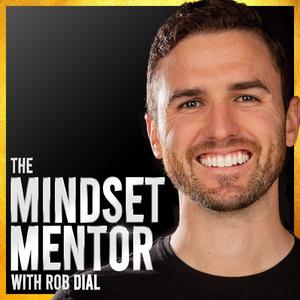 The Mindset Mentor
The Mindset Mentor
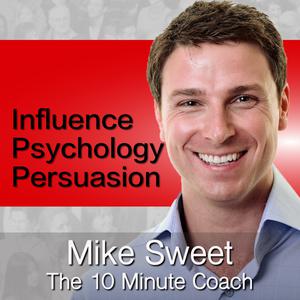 Influence Psychology and Persuasion - Mike Sweet - 10 Minute Coach - Develop and Discover
Influence Psychology and Persuasion - Mike Sweet - 10 Minute Coach - Develop and Discover
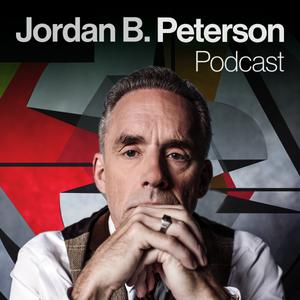 The Jordan B. Peterson Podcast
The Jordan B. Peterson Podcast
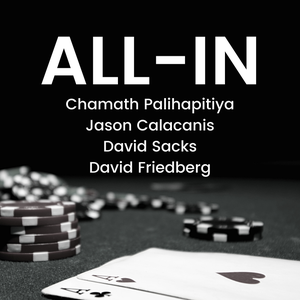 All-In with Chamath, Jason, Sacks & Friedberg
All-In with Chamath, Jason, Sacks & Friedberg
 NLP MasterCLASS
NLP MasterCLASS
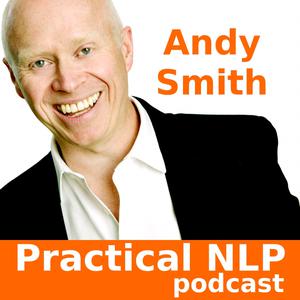 Practical NLP Podcast
Practical NLP Podcast